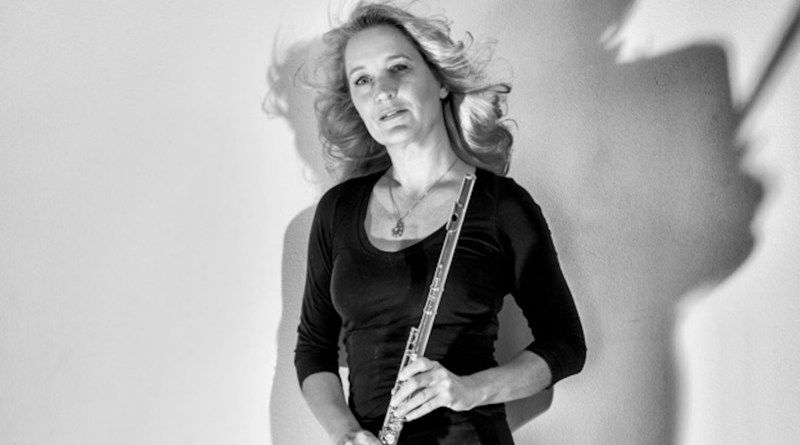New Album Feature: Ulla Miilmann’s “Carl Neilsen The Concertos”
Ulla Miilmann and the Nielsen Concerto
Ulla Miilmann was appointed principal flutist at The Danish National Symphony Orchestra at the age of 22. Since then, she has had an extensive career in orchestra, chamber music, and teaching. In 2007, she was a US Grammy nominee in the category” Best Instrumental Soloist Performance with Orchestra” for Ole Schmidt’s Flute Concerto recording. She is Associate Professor of flute at The Royal Danish Academy of Music in Copenhagen. In 2017, she received the largest honorary award in Denmark, The Carl Nielsen Award, for her outstanding musicianship and contribution to Danish music and cultural life for the past 25 years.
Ulla Miilmann has been working with the Danish National Symphony Orchestra for almost 30 years. In this time, the orchestra has made a huge transition. The new orchestra hall, designed by Jean Nouvel, opened in 2009 and had a major impact on the level of playing. The new perception of sound boosted each musician, and chamber music-making within the orchestra took a new meaning. Apart from the regular classical music programming of the orchestra, new concept concerts have been developed to attract new audiences, creating a balance between past and present.
The music of Carl Nielsen has always been very present in Ulla Miilmann’s life. All Danish people feel a closeness to him. You start your life with cradle songs and lullabies from his hand. There are plenty of children’s songs by Nielsen, and you will hear his music in churches, at weddings and funerals.“The flute concerto, at first impression, can seem odd. It ́is a condensed composition with many complex ideas and unexpected harmonic structures. For many years, I had a hard time finding the connecting force in the concerto. One night, after a long period of reflection, I was convinced that an executed organic pulse throughout the piece was the one binding element that would create meaning in this complex piece. The pulse or heartbeat represents the individual’s inextinguishable will to live a life in which you experience yourself with a multi-faceted personality, against a world which is just as compound and unpredictable”
In the late 90s, Ulla had her Nielsen debut in connection with The Danish National Symphony Orchestra’s “The Malko Conductors Competition,” where she had to perform the concerto with six different conductors in a row on live TV. Since then, she has performed the concerto many times with the Danish National Symphony Orchestra, the Aarhus Symphony Orchestra, Odense Symphony Orchestra, South Jutland Orchestra, from Saint-Petersburg to Taiwan. Finally, she was asked by the orchestra management if she was interested in recording the concerto with chief conductor Fabio Luisi for the Deutsche Gramophone label. Apart from the flute concerto, also the clarinet concerto (with Johnny Teyssier) and the violin concerto (with Bomsori Kim] were scheduled.
“Preparing for the recording, I didn’t listen to any other recordings of the concerto. I have created my rendition based on his vast number of songs, drawing from my own experience with playing all his orchestral works, reading books about Carl Nielsen and his time – and in this process, finding a kinship between the composer and myself, creating a personal, emotional connection to his music as well.” Having recorded the Nielsen symphonies cycle for the third time, this time with Fabio Luisi, she feels Luisi’s lyrical approach does right to the Nielsen symphonies and the flute concerto.
“The music of Carl Nielsen is very often misunderstood, especially his music notation and his particular use of accents. These are often played with a Shostakovich military harshness, but they should be treated as an urgency to lyrical expression. In understanding Nielsen, his music is often talked about in terms of the Danish weather, which changes between rain and sunshine. I think this outer depiction doesn’t give enough space to his much more psychological compound and never one-sided writing. In the concerto, the flute represents the idea of Arcadia, a world of simple pleasure and quiet. But the flute constantly questions its worth and identity, depicted in the dialogues with the timpani, the trombone, and other instruments. The flute mirrors itself in all these duets, experimenting to take on other characters. However much trying to be something else, the flute accepts its beautiful, archaic ancestry. When you listen to this new recording, you will hear a strong lyrical emphasis. I realize it’s on the absolute limit with its slower tempi necessary to insist on the lyrical side. However, I felt compelled to accept this insistency that grew from within my heart.”
The recording took two full days. It was an interesting experience, where the strains of recording challenges your own preparations.“It’s a psychological battle just to go on and on recording. You lose track of what worked and what didn’t work. You must trust that the labor you put into it beforehand gives the result you intended.”
